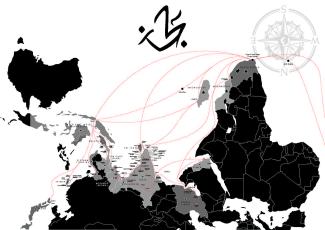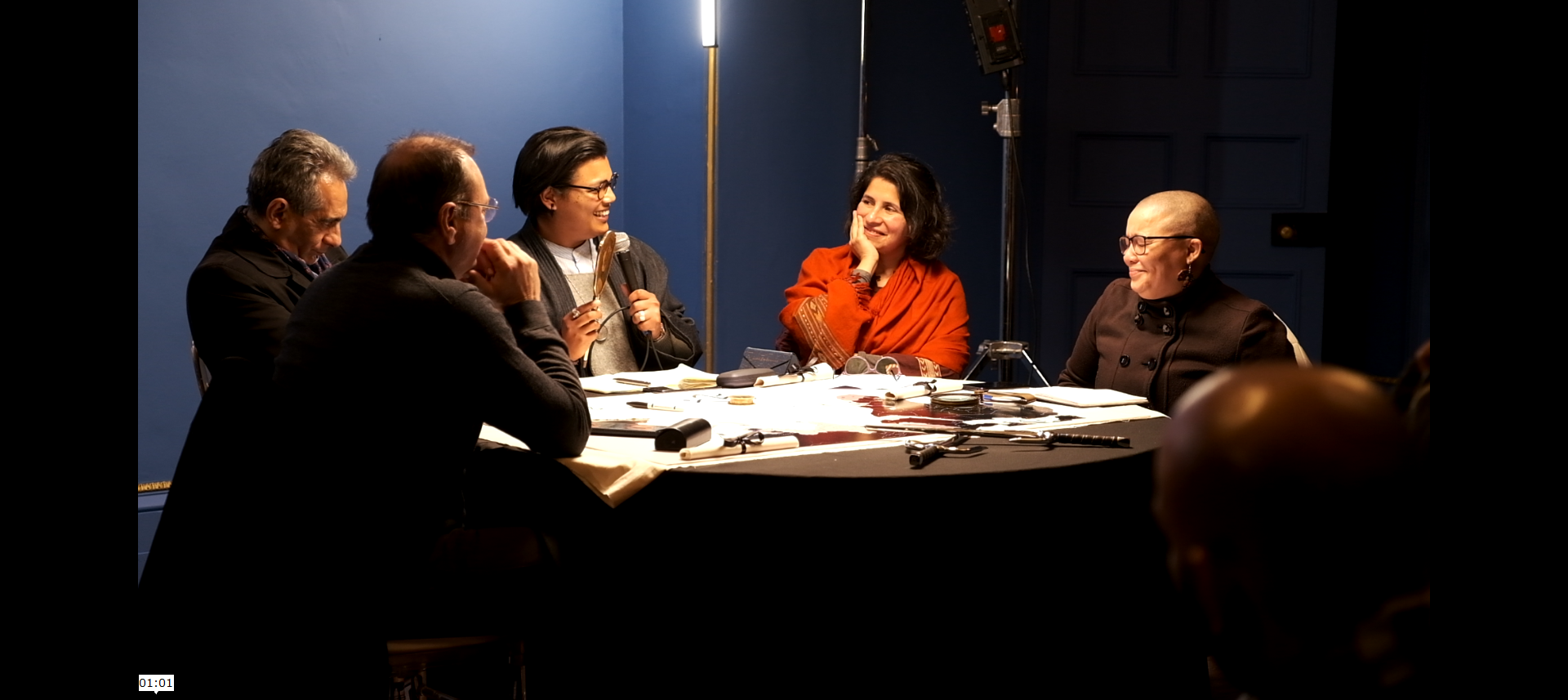
By Wisaal Abrahams (CAPE MALAY)
The age of the merging of the human experience with technology is upon us; that inevitable slope of what is produced by the mind intertwined with a soul vs. the mind of a machine taught by a soul. As a 32-year-old visual artist/activist from Cape Town, I feel the century’s urge to create at the speed of light and an urgent shift in the way we pursue our collective healing, made more pressing following the devastating impact that 300 years of colonization and 46 years of Apartheid has had on the people of South Africa. Many people, however, are wary of the latest advancements in the tech space, of who controls the data and the profits, and what the long term impact will be on us as a global society—a society that is already struggling to save our planet from greed and warring destruction. This is a fair and valid fear to be upheld by the cautionary naysayers. I, however, hold a different opinion of where this age of tech can lead us to. And when I say “us,” I am referring to the Indigenous Peoples of the world, the people of soil and sky whose blood and realities have been scattered around the wasteland of colonial conquest and imperial sport. I refer to our people who work tirelessly to uplift and safeguard our identities, and like any child born from genocide-drenched land, who desperately desire the connection and creative economy to be able to live these hard-won identities into a safe and secure future.

Launch of “The Thrall Dialogues,” a biannual dialogue series hosted by ManVrou at the Castle of Goodhope.
For the Alter, For the Alchemists
Wisaal Abrahams
It’s all us.
We—the nobodies and somebodies of this world,
the lions and eagles,
Gods and Goddesses,
tribes and mystics,
the tears and claws,
the blood and beauty.
It’s all us.
I find my way to the temple. You crawled.
We are together, but we pray alone. We pray for the ones
who have been here and for the ones on their way.
This temple is for us. We made this a temple.
We sit on the steps and laugh
Because it is all us.
Then we leave to know, to begin we must end.
To the world we are both, a stranger, and a friend.
So, where do we truly begin? Our humble collective called ManVrou (an Indigenous word to Cape Town meaning a masculine woman, used to derogatively describe a butch-presenting womxn), has embarked on a journey to uplift the Indigenous identities that have been destroyed and birthed by the colonial hand in Afrasia. The goal of all our projects, or rather, the golden thread weaving through everything we produce, is the creation of self-esteem for the user and audience. After many years of research into my own identity as a Queer Cape Malay artist and activist, I have come to realize that the production of self-esteem is crucial to navigating the layout of one’s internal and external worlds; that the presence of this elusive self-esteem could be the life preserving factor when struggling to survive the chaos of post-colonial realities in the midst of corrupt governments, and even more concerning, the local male psyche regarding safety and the disabling economic factors that carry all of this in the balance. Where is the time and space to develop one’s inner character and relationship to something bigger than our world? How do we transcend the limitations of our world? How do we envision a world where we are culturally represented, economically equal, creatively free, and where we can design structures that cater to the Indigenous gaze and counter the gentrification of our land? Enter the age of virtual reality, or, as I argue, a welcomed strategy to our losing battle with cultural and land erasure across the globe.
What is the safeguarding and revitalization of Indigenous Traditional Knowledge through technology? My team utilizes the art of filmmaking and world-building applications to realize and create virtual spaces that can be used to educate people on the realities of the forgotten people. We began by taking an interest in our local museums, navigating what it feels like to be within a flagship heritage space such as The Castle of Goodhope, the educationally supportive Iziko Museums of South Africa, the elegantly entrepreneurial spirit of the Koena Institute, or the purposefully cluttered brilliance of the Cape Heritage Museum. Next, we began speaking to academics about the important work they are doing in the fields of emancipatory research, museology, and sociology, and held dialogues with these experts on the topics of genocide, legacy, economics, and bloodlines. Realizing that it takes a collective effort to understand and navigate a complex issue took us a step further in attaining clarity in the realm of worldbuilding and served as an imperfect way to gather the truth. Our third step, which I believe should be an ongoing pursuit of every social entrepreneur, is to maintain the relationships of our contemporaries in the arts; to participate in community affairs, attend the birthdays of fellow activists, to consistently network for other like-minded individuals, to break the barriers of ageism, sexism, and homophobia, to, dare I say, evolve. To reimagine a world requires the risk of inclusivity at every cost: “Nothing for us without us.”
If not for the honorable bonds of my colleagues, much of this attempt to run at the pace of tech would be impossible. Between Nabilah Khan, who is our project manager/ producer, and Kyle Donald Marais, our immersive technology collaborator, the ideation process gets held and cared for till the walls go up. Coproducing across the racial line in South Africa possesses its own challenges, but none that our collective has not been able to face and triumph over. Our generation sits perfectly in the balance of enjoying the surf of a late July swell at Muizenberg Beach and managing the rational fear of sharks potentially gliding beneath us. We are here to create something new and we have prioritized our mental health and our ability to dream, thus creating a foundation of care and consideration when collaborating on different economic footings.
Our millennial generation has been firm on implementing the notion that it will take the radical inclusion of a truly intersectional team to envision the world of our futures. The crucial question regarding tech in the Indigenous space is whether we will ever have economic access and support to produce in this field. When trying to promote the importance of this form of technology to the various museum spaces, our biggest challenge was emphasizing how it could make these ethnographic spaces more relevant to the youth. We need to speak to the next generation and there is too much to cover. There is too much to read about, too much to imagine, too much to mourn, too much to see, too much to unsee. If we truly want to educate the next generation on anything about the past in the hopes that we can better design a future for ourselves, we should be considering world-building applications and the advancements in immersive technologies like 360-degree sound. With so much on our plate already, what is another avenue of the unknown? And as I always try to remind myself, if we are indeed standing at the precipice of creating at the speed of light, this alarmingly large backlog of progress doesn’t seem so overwhelming after all.
The ManVrou Mantra
Wisaal Abrahams
Create a beautiful world with me,
One, where every psyche is free.
Adorn yourself and feel safe, at last.
Tell the truth, and don’t fear the past.
Welcome new and healthy relationships,
Find and close every tap that drips.
Know, that ugly is a state of mind.
Do not leave your soul behind.
You are whole.
Wisaal Abrahams (Cape Malay) is a creative producer, visual artist, and coach.
Photos courtesy of Wisaal Abrahams.
